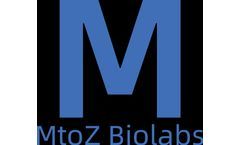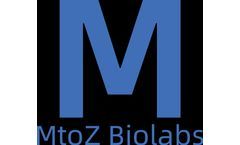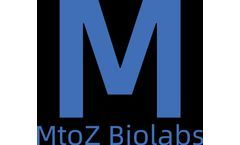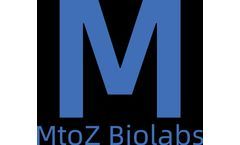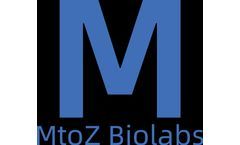Refine by
Antigen Specificity Articles & Analysis
47 articles found
Tissue cross-reactivity studies assist in identifying the specific antigens involved in these diseases. For example, in conditions like rheumatoid arthritis or lupus, researchers can pinpoint which autoantigens share similarities with microbial antigens. ...
Comparing gold nanoparticles with latex beads, it can be observed that lateral flow assays using latex beads on the conjugation pad have higher sensitivity and specificity than assays using gold nanoparticles. Latex Agglutination Assays: The Role of Dyed Polystyrene Particles Latex agglutination is the change in agglutination capacity observed when a sample containing a ...
The firm develops monoclonal antibodies that target tumor-specific antigens through the services. This method shows potential for better patient response rates while simultaneously enabling the detection of tumor progression and resistance mechanisms. ...
Single-domain antibodies consist of a single polypeptide chain that retains the ability to bind specifically to antigens. Unlike traditional antibodies, which are composed of heavy and light chains, these smaller fragments are typically around 15 kDa in size. ...
This host cell, often a yeast or bacteria, then produces antigens that mimic the pathogen’s characteristics. When administered, these antigens stimulate the immune system to recognize and combat the actual pathogen without causing disease. One notable example is the use of the hepatitis B virus surface antigen. By inserting the relevant ...
These technologies allow scientists to cut, insert, or modify specific DNA sequences, enabling the customization of T cells to recognize and attack disease-specific antigens. ...
In addition, gene delivery can be used to modify vulnerable cells, analogous to T cells, to express antigen receptors that specifically kill cancer cells. Overall, gene delivery has great eventuality as an important tool for the development of new and personalized cancer drugs technology. ...
This antibody has a high degree of specificity and affinity, and can accurately recognize and bind to a specific antigen. By sequencing the Boxcab ab antibody, researchers can obtain important information about its structure and function, which is crucial for understanding its interaction with the antigen and designing more ...
They have the advantages of small size, high stability, and good penetration, and therefore have a wide range of application prospects in the fields of clinical treatment, diagnostic reagent development, etc.Characteristics of NanobodiesThe size of nanobodies usually ranges between 10-15kDa, which is only 1/10 of the size of regular antibodies. Their unique antigen-binding ...
In the environment of cancer, antigens may be specific to tumor cells and are known as tumor-specific antigens (TSAs) or tumor-associated antigens (TAAs). Antibodies, also known as immunoglobulins, are proteins produced by B-cells, a type of white blood cell. They recognize and bind to specific ...
Monoclonal antibodies are highly specific biological molecules that are crucial in many areas like disease diagnosis, treatment, and biomarker discovery. They can trigger an immune response in the human body by recognizing and binding to specific antigens, thereby combating pathogens. However, to develop monoclonal antibodies with high ...
This epitope can be a unique area in the target antigen with specificity, allowing the antibody to accurately recognize and bind to it; or it can be those areas with cross-reactivity, allowing the antibody to interact with other proteins with similar sequences.Determine the Type of ExperimentThe types of experiments suitable for antibodies are often related to ...
Recombinant protein vaccine is a type of vaccine that does not contain complete pathogens and is prepared from specific protein antigens produced by heterologous expression systems. ...
Th cells are common precursors of all Th cell subpopulations before they are stimulated by antigen and are called Th precursor cells with multidirectional differentiation ability. ...
These therapeutic antibodies aim to specifically target antigens on the surface of cells and bind to them, leading to acidic reactions that result in the destruction of target cells. ...
This conjugate can selectively deliver the drug to disease-related cells, such as cancer cells, thereby increasing efficacy and reducing toxicity to normal tissues.ADC is a complex composed of an antibody and a drug (usually a cytotoxic drug). The antibody component specifically targets surface antigens on specific cancer cells, while the drug ...
Smaller volume Nbs can achieve higher tissue penetration and stronger cell killing in vivo.Antigen recognition ability: Among all complementarity determining regions, CDR3 accounts for 60-80% of the antigen recognition specificity. The CDR3 loop is long and extended. This characteristic gives VHH better antigen recognition ...
However, direct treatment with drugs lacks specificity and sensitivity and tends to attack normal cells indiscriminately, resulting in side effects. ...
Immunohistochemistry is the study of the localization, characterization, and relative quantification of peptides and proteins in tissue cells using the antigen-antibody reaction, in which an antigen specifically binds to an antibody and a chemical reaction results in the visualization of dyes such as fluorescein and other chromogens, as well as ...
Antibody Backbone: The Starting Point for ADC Design l Selection of antigen specificity Since the mechanism of ADCs begins with the binding of target cells, the antibody should have high specificity for the target antigen. ...






